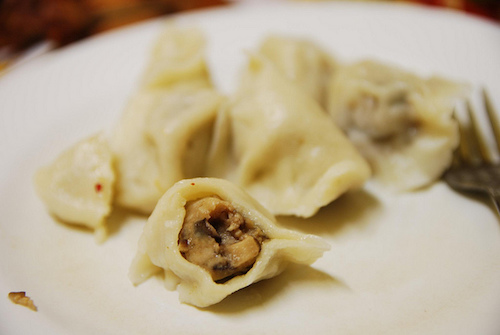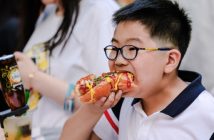
Over the next couple of weeks, millions of Chinese people will take part in the largest human migration in the world for the annual chunyun (Spring Festival travel). Most are rushing to make the big family reunion dinner, which traditionally happens on the eve of Spring Festival on February 7. If you’re staying in Beijing, why not assemble your own Chinese feast to ring in the lunar new year? Here are six lucky foods you should include.

Whole Fish
Because the Chinese word for fish, 鱼 (yu), is a homonym for "surplus" (余), a whole steamed fish is often the centerpiece of a Spring Festival meal. Thus, the head and tail are usually left on the fish to symbolize surplus in the new year.
Click here for a classic steamed whole fish recipe with ginger, scallions, and soy sauce. Buy a white, lean, and firm fish like bass (鲈鱼 luyu), tilapia (罗非鱼 luofeiyu), cod (鳕鱼 xueyu), or red snapper (红鲷鱼 hongdiaoyu). If you’re at the wet market, be sure to ask for the fish to be cleaned (清理 qingli).

Yuanxiao
Yuanxiao (元宵) are balls of glutinous rice filled with sweet paste and served in boiled water. Also known as tangyuan (汤圆), yuanxiao get their name from the Lantern Festival (元宵节 yuanxiao jie) that marks the last day of Spring Festival on the 15th day of the first lunar month. This year, Yuanxiao falls on February 22.
Traditionally, families celebrate by hanging lanterns around the house and visiting temples to solve lantern riddles, an activity known as cai dengmi (猜灯谜). Though the festival’s origins are disputed, yuanxiao themselves are an intrinsic part of Spring Festival.
Around these parts, locals will tell you there’s only one acceptable place to pick up yuanxiao gift boxes: Daoxiangcun (稻香村), the venerated Beijing bakery chain. Hurry – there are bound to be queues all over town. Daoxiangcun’s official website has the most up-to-date list of store locations, but it’s in Chinese only. Otherwise, Google Maps lists one in Shunyi and a few in Dongcheng and Chaoyang (VPN needed).

Dumplings
Boiled dumplings (水饺 shuijiao) are a northern specialty. Traditionally made by Chinese families on the eve of Spring Festival and consumed during Yuanxiao, dumplings are prized for their resemblance to gold ingots.
Making dumplings is a fun group activity. Here’s a photo-heavy basic recipe for pork and cabbage dumplings, which can also be pan-fried to make 锅贴 guo tie (pot stickers).

Citrus Fruit
Though oranges, mandarins, and tangerines are more popular in the south, fresh citrus fruit and potted plants (available at flower markets and select supermarkets) also make popular gifts here. In the southern Chaozhou dialect, the word for "orange" (橘, ju in Mandarin) is homophonous with "luck" (吉, ji in Mandarin).

Chicken
"Chicken" (鸡 ji) is a homophone for – you guessed it – 吉 ji or "luck." Poached chicken dishes are popular in China; try this simple baiqieji ("white cut chicken") recipe with ginger and scallions.

Niangao
Niangao (年糕) are glutinous rice cakes that recall the Chinese saying 年年高升 nian nian gaosheng ("become more prosperous with every year"). They can be bought at supermarkets and stir-fried with meat and vegetables. Here is a recipe that uses store-bought niangao.
Sijia Chen is a contributing editor at beijingkids and a freelance writer specializing in parenting, education, travel, environment, and culture. Her work has appeared in Travel + Leisure, The Independent, Midnight Poutine, Rover Arts, and more. Follow her on Twitter at @sijiawrites or email her at sijiachen@beijing-kids.com.
Photos: Creative Commons photos courtesy of Micah Sittig, Jackie L Chan, shizo, Alpha, Julie Jablonski, and Melissa Johnson (all Flickr)



